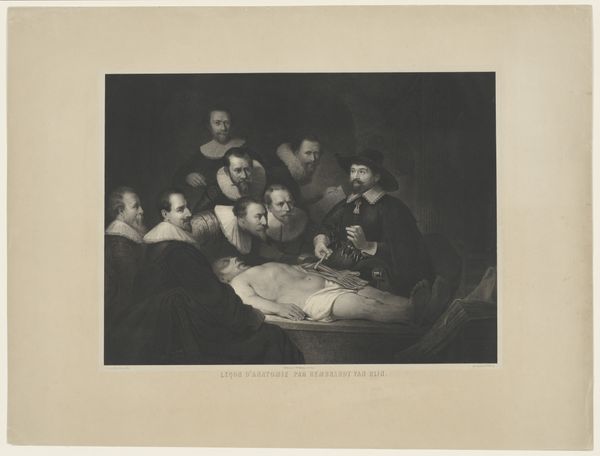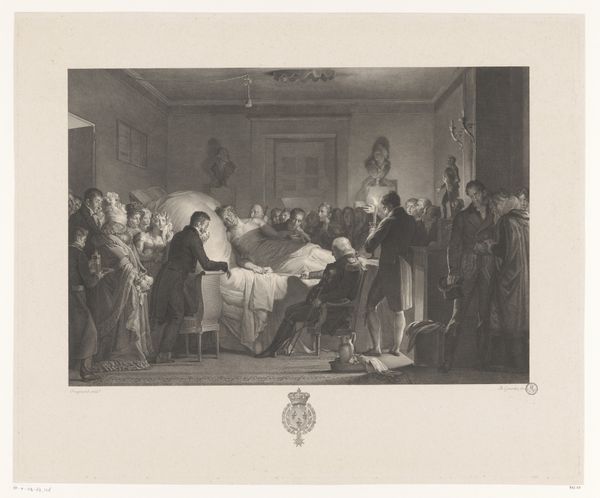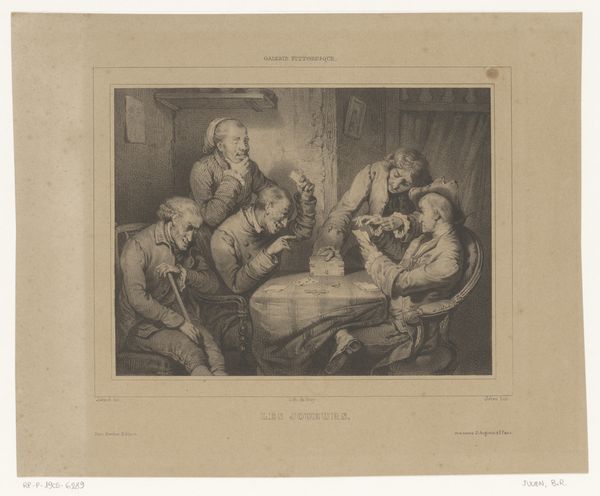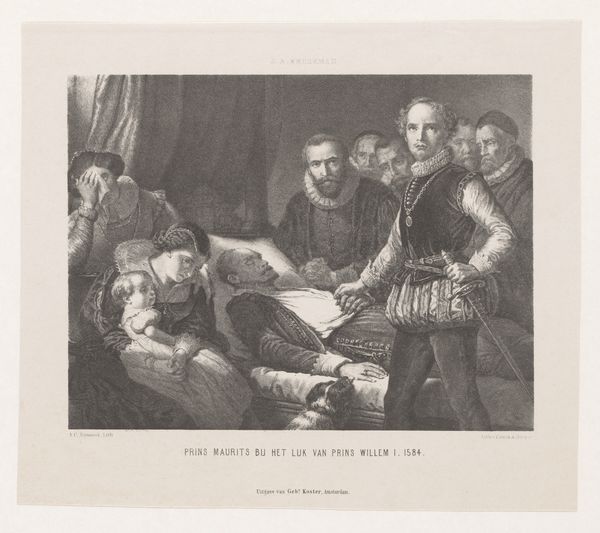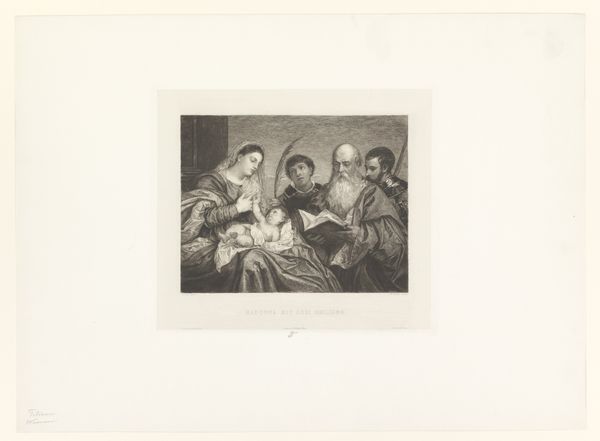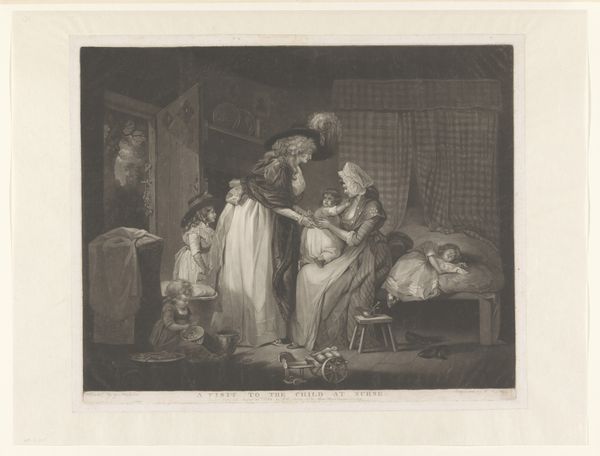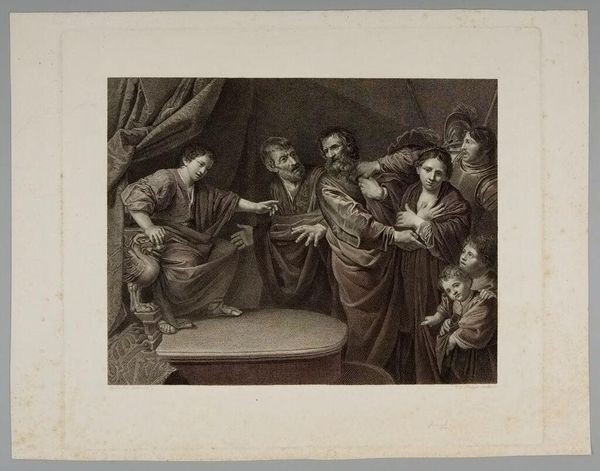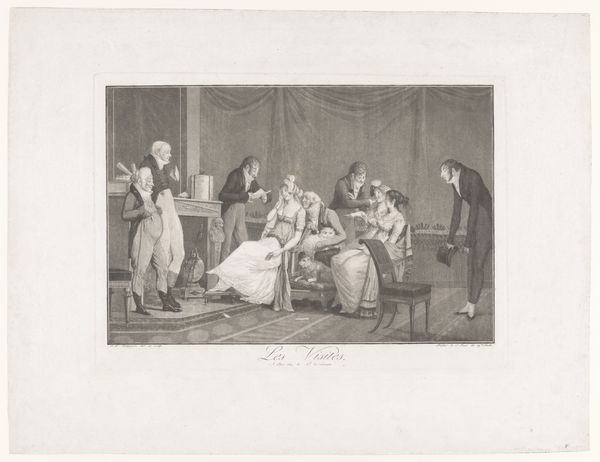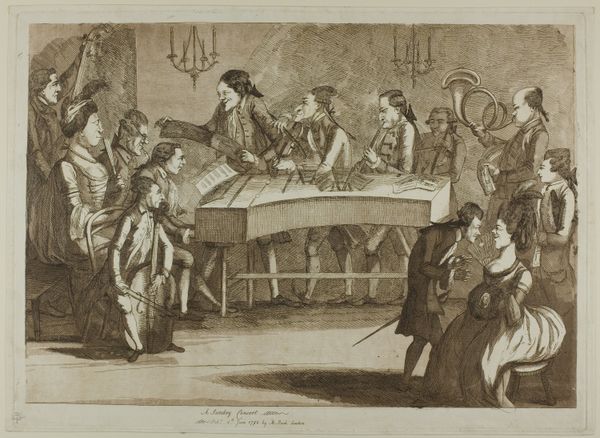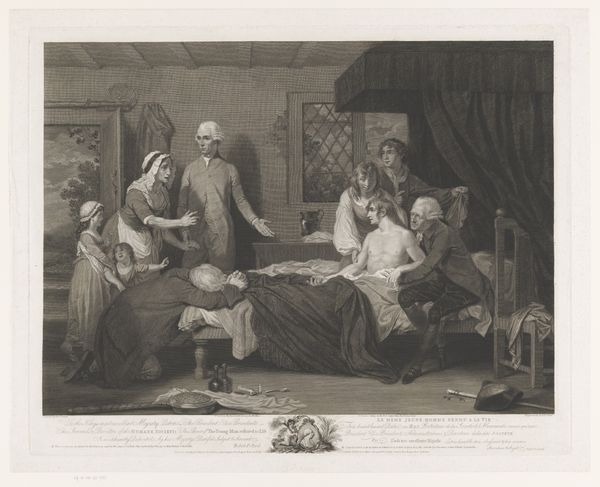
print, engraving
#
portrait
#
print photography
# print
#
group-portraits
#
chiaroscuro
#
genre-painting
#
history-painting
#
academic-art
#
engraving
Dimensions: height 450 mm, width 588 mm
Copyright: Rijks Museum: Open Domain
Curator: Standing before us, we see an engraving produced by Jean Baptiste Alfred Cornilliet in 1851 after Rembrandt's famed painting "The Anatomy Lesson of Dr. Nicolaes Tulp." The print, now housed here at the Rijksmuseum, captures a pivotal moment in medical history and its representation. Editor: It's striking how Cornilliet, through engraving, distills that original composition into something so stark. The dramatic lighting emphasizes the coldness of the scene—the lifeless body on the table against those rather severe, observant faces. Curator: Indeed. Think of the processes involved. The engraver had to translate paint and brushstrokes into a language of lines and textures, carving the image into a metal plate to then produce multiple impressions. It's a layered act of reproduction, each step altering the work's inherent meaning. This print allowed for broader dissemination of medical knowledge but also replicated certain social structures. Editor: Absolutely. And Rembrandt’s painting itself, and consequently Cornilliet’s print, can be viewed as a visual assertion of power. Note who is centered—Dr. Tulp— and how he holds court, dissecting the body while the other doctors look on with fascination. The deceased is treated less as a person, and more as a text to be interpreted. What was the status of this body? Unclaimed? Criminal? Whose body gets used for teaching in the history of medicine is no small question. Curator: An excellent point. And we shouldn’t ignore the consumer aspect here. Who would purchase and display such a print? Likely other medical professionals, who, through owning such a depiction, publicly aligned themselves with intellectual pursuits and emergent scientific disciplines, thus bolstering their standing. Editor: I think considering this piece now reminds us how scientific and medical knowledge— and its visual representation—are deeply embedded in issues of class, race, and access. Curator: So, by studying the materiality of this engraving and understanding its relationship to the larger societal conditions that birthed it, we start to ask critical questions about access to knowledge and the distribution of power. Editor: Right. It calls us to ask— who benefits, and who is exploited when images like these are circulated? Curator: Precisely, a reproduction which becomes an important historical document in its own right. Editor: I will now leave thinking of those relations in ways that impact current practice, too.
Comments
No comments
Be the first to comment and join the conversation on the ultimate creative platform.


